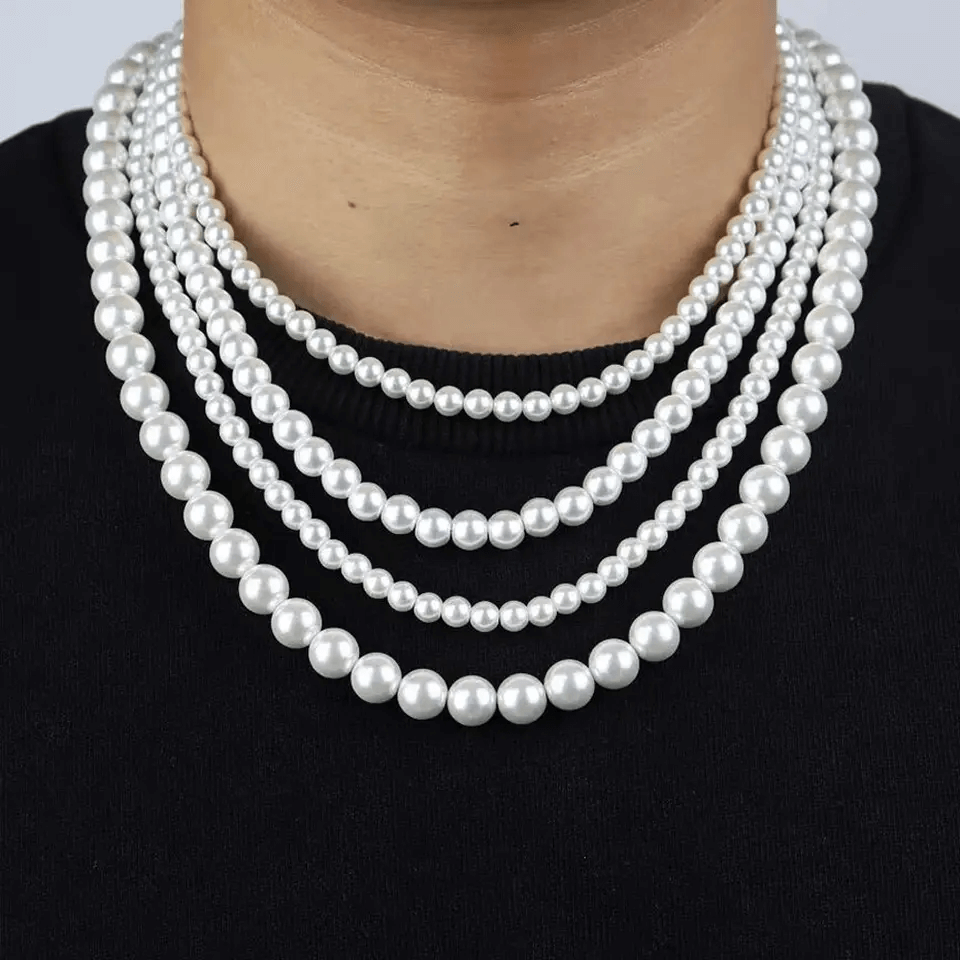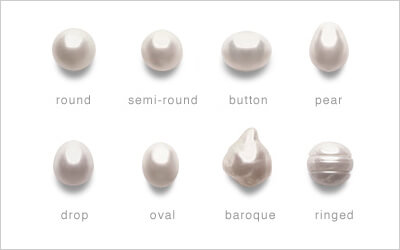I. Introduction
Pearls are one of the most sought-after gemstones in the world. Their unique beauty and luster have been prized for centuries, making them a popular choice for jewelry, clothing, and accessories. But beyond their visual appeal, pearls have a rich history and a number of interesting facts that make them even more fascinating. In this blog, we will explore the world of pearls, from their formation to their symbolism, and everything in between.

II. Formation of Pearls
Pearls are formed inside the shells of certain mollusks, such as oysters and mussels. There are two ways in which pearls are formed: naturally and cultured. Natural pearls are formed when a foreign object, such as a grain of sand or a piece of debris, enters the mollusk's shell and irritates the mantle tissue. The mollusk then secretes a substance called nacre to coat the irritant, forming a pearl.
Cultured pearls, on the other hand, are created through a process of human intervention. A small piece of tissue from a donor mollusk is implanted into the host mollusk's mantle tissue. The host mollusk then begins to coat the tissue with nacre, creating a pearl. Cultured pearls can be produced in a variety of shapes, sizes, and colors, depending on the type of mollusk used and the specific cultivation process.
Interesting Fact: It has been confirmed that the largest recorded pearl is actually called the "Pearl of Puerto" and not the Pearl of Lao Tzu, as previously thought. Interestingly, both pearls were discovered in the waters surrounding Palawan Island in the Philippines.
The largest pearl - Pearl of Puerto Princesa (Filipino: Perlas ng Puerto)
III. Types of Pearls
There are several types of pearls, each with its own unique characteristics and qualities. Some of the most popular types of pearls include Akoya, freshwater, South Sea, and Tahitian.
Akoya pearls are the most commonly recognized type of pearl. They are typically small in size, ranging from 2mm to 10mm, and have a classic round shape. They are usually white or cream-colored, with a high luster and a smooth surface.
Freshwater pearls are produced by freshwater mussels and are typically larger than Akoya pearls. They can be found in a variety of colors, including white, pink, and lavender. Unlike Akoya pearls, freshwater pearls can be irregular in shape and have a less defined surface.
South Sea pearls are among the largest and most valuable pearls in the world. They are produced by a type of oyster found in the warm waters of Australia, Indonesia, and the Philippines. They can range in size from 8mm to 20mm and come in a variety of colors, including white, silver, and gold.
Tahitian pearls, also known as black pearls, are produced by a type of oyster found in French Polynesia. They are typically large in size and range in color from gray to black, with undertones of blue, green, or purple.
Interesting Fact: Pearls come in a wide range of shapes, including round, oval, baroque, and teardrop.

The shapes of Pearls
IV. Symbolism of Pearls
Pearls have been revered throughout history for their beauty and rarity. They have also held significant cultural and religious symbolism. In ancient Rome, pearls were considered a symbol of wealth and status. In ancient Greece, pearls were believed to be the tears of the gods.
In Christian tradition, pearls are often associated with purity and innocence. In the Bible, Jesus compares the kingdom of heaven to a pearl of great price. In Hindu mythology, pearls are associated with the moon and are believed to have mystical powers.
In modern times, pearls are often given as gifts to symbolize love, friendship, and loyalty. They are a popular choice for bridal jewelry, as they are believed to represent purity and perfection.
Interesting Fact: In the 16th century, pearls were so highly prized in Europe that they were used as currency and were worth more than gold.
V. Famous Pearls
Over the centuries, many famous pearls have captured the imagination of people around the world. Some of the most notable include La Peregrina, the Hope Pearl, and the Pearl of Lao Tzu.
La Peregrina is one of the most famous pearls in history. It was discovered in the 16th century off the coast of Panama and was owned by a succession of royals and celebrities, including King Philip II of Spain and actress Elizabeth Taylor. The pearl is teardrop-shaped and weighs over 200 carats.
The Hope Pearl is another famous pearl with a storied history. It was owned by Louis XIV of France and later became part of the collection of Henry Philip Hope. The pearl is large and round, with a bluish-gray color.
The Pearl of Lao Tzu is one of the second largest pearls in the world, weighing over 14 pounds. It was discovered off the coast of Palawan, Philippines in the 1930s and is believed to be over 600 years old. The pearl is irregular in shape and has a yellowish-brown color.
Interesting Fact: The oldest known pearl is the Abu Dhabi Pearl. It is a natural pearl that was discovered on Marawah Island off the coast of Abu Dhabi in the United Arab Emirates. The pearl is estimated to be over 8,000 years old, making it one of the oldest known pearls in the world.
Abu Dhabi Pearl - The World’s Oldest Known Natural Pearl
VI. Care and Maintenance of Pearls
Pearls are delicate gemstones that require special care and maintenance to keep them looking their best. Here are some tips for preserving your pearls:
-
Store pearls in a soft pouch or jewelry box to prevent scratching.
-
Keep pearls away from heat and sunlight, as these can cause them to become discolored or damaged.
-
Avoid exposing pearls to chemicals, including perfume, hairspray, and household cleaners.
-
Clean pearls gently with a soft, damp cloth. Avoid using harsh chemicals or abrasive materials.
-
Have your pearls professionally cleaned and restrung every few years to keep them in optimal condition.
Interesting Fact: Pearl powder - A cosmetic ingredient that is made from crushed pearls or pearl oyster shells. It has been used in traditional Chinese and Ayurvedic medicine for centuries and is believed to have anti-aging and skin brightening properties.
Conclusion
Pearls are truly fascinating gemstones with a rich history and a number of interesting facts. From their formation to their symbolism, there is much to learn and appreciate about these beautiful gems. Whether you are a collector, a fashion enthusiast, or simply appreciate the natural world, pearls are a timeless and captivating choice. So the next time you admire a beautiful pearl, remember the fascinating story behind its creation and the cultural significance it holds.




















































